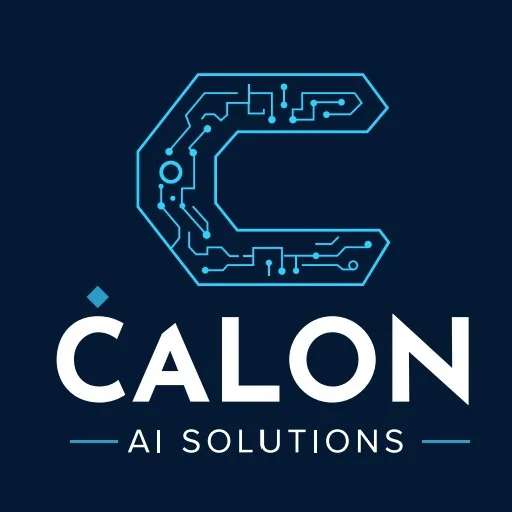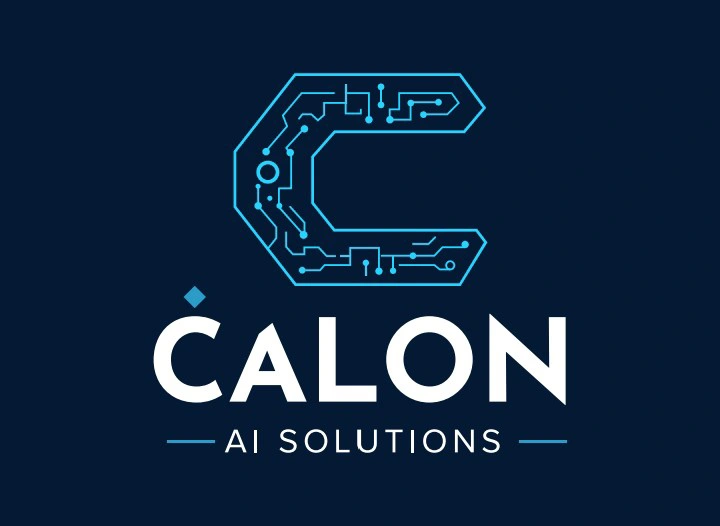Agentive AI Today and Tomorrow How Autonomous Systems Are Transforming Our World
I.Introduction
In today’s rapidly evolving digital landscape, agentive AI is emerging as a groundbreaking technology poised to redefine how systems interact with their environments. Unlike traditional AI, which follows static, pre- programmed rules, agentive AI embodies autonomy, learning from its surroundings, and proactively making decisions. This shift promises not only to enhance efficiency and innovation but also to transform industries and everyday life fundamentally. The importance of exploring agentive AI today cannot be overstated. As organizations across sectors embrace digital transformation, understanding and leveraging these intelligent systems will be key to staying competitive. Moreover, the future potential of agentive AI is immense—from revolutionizing customer experiences and automating complex workflows to reshape the very nature of work and decision-making.
In this post, we will delve into:
1.The definition and core characteristics of agentive AI.
2. How agentive AI differs from other AI paradigms,
including traditional, generative, and predictive models.
3.The mechanisms behind agentive AI, including its
architecture, training methods, and data processing.
4.Real-world applications, ethical considerations, and the
challenges of deploying such advanced systems.
5.Practical insights into the business applications and
future trends shaping the next generation of AI.
Join us as we explore the transformative potential of agentive AI and uncover the ways it is set to redefine the future of technology and work.

II.Understanding Agentive AI: Definition & Meaning
What is Agentive AI?
Agentive AI represents a new paradigm in artificial intelligence where systems are designed to act as autonomous agents. Unlike conventional AI that merely executes predefined instructions, agentive AI is built to sense its environment, make proactive decisions, and adjust its behavior based on real-time data. In essence, it is an AI system capable of independent action— one that can interpret its surroundings and take initiative without constant human oversight.
Agentive AI Definition & Meaning
At its core, agentive AI refers to AI systems that emulate certain aspects of human cognition. These systems go beyond basic data processing to incorporate features such as self-improvement, context awareness, and decision-making autonomy. The detailed definition can be broken down into key elements.
- Autonomy: The capability of the AI to operate and make decisions on its own, reducing the need for continuous human control.
- Self-Learning: Through machine learning and deep learning techniques, agentive AI systems evolve based on experience, allowing them to improve their responses and strategies over time.
- Context-Awareness: The ability to understand and interpret the surrounding environment, enabling the AI to make decisions that are relevant to the current situation. By defining agentive AI in these terms, we highlight its progression from simple, rule-based systems to complex, adaptive entities that can function with a degree of independence akin to human decision-making.
Characteristics of Agentive AI
Several key characteristics set agentive AI apart from other forms of artificial intelligence:

- Autonomy: Agentive AI operates without requiring step by-step human guidance, enabling it to handle tasks independently.
- Proactive Decision-Making: These systems are designed to anticipate needs and act before issues become apparent, rather than solely reacting to explicit instructions.
- Self-Learning: Through continual interaction with their environment, agentive AI systems learn and adapt, improving their performance and decision-making processes over time.
- Context-Awareness: By understanding situational nuances, agentive AI can tailor its actions to fit the specific demands of different environments.
- Adaptability: Agentive AI is capable of adjusting its strategies and methods dynamically in response to evolving data and conditions.
Understanding these core aspects provides a solid foundation for appreciating how agentive AI is not just a tool, but a transformative technology that blends automation with intelligent, autonomous decision-making.
III. Comparison of Agentive AI with Other AIs
Agentive AI vs. Traditional AI
- Learning and Adaptability: Traditional AI systems typically operate on fixed algorithms and datasets. They are designed to perform specific tasks based on pre-programmed rules and often require manual updates to adapt to new scenarios. In contrast, agentive AI is built to learn continuously from its environment. It adapts in real time by incorporating new data, allowing for more nuanced and evolving decision making processes.
Agentive AI vs. Automation
Rule-Based vs. Dynamic Decision-Making:
Automation systems excel at executing repetitive, rule based tasks with high consistency. Their operations are predictable and confined to set parameters. Agentive AI, however, goes beyond simple automation by integrating dynamic decision-making capabilities. It not only follows established rules but also assesses context, anticipates changes, and proactively makes decisions, thus handling complex and unpredictable scenarios more effectively.

Agentive AI vs. Generative AI
Content Creation vs. Decision/Action:
Generative AI is primarily concerned with producing new content—whether text, images, or music—by learning and mimicking patterns found in its training data. Its strength lies in creativity and content generation. On the other hand, agentive AI focuses on taking actions based on its understanding of the environment. Instead of creating content, it uses its capabilities to make informed decisions and execute actions, making it more action-oriented and suitable for tasks that require active intervention.
Agentive AI vs. Autonomous AI
Independence and Control: Both agentive AI and autonomous AI are designed to operate with minimal human intervention. Autonomous AI typically refers to systems that perform tasks independently within well-defined parameters (e.g., self-driving cars). Agentive AI shares this independent operation but adds a layer of proactive learning and decision-making. It is not only self-reliant but also continuously adapts to changes and takes initiative, which makes its operational scope broader and more flexible than traditional autonomous systems.
Agentive AI vs. Predictive AI
Prediction vs. Proactive Action: Predictive AI focuses on forecasting future events or trends by analyzing historical data. Its role is to provide insights and predictions, which can support decision-making. Agentive AI, however, goes a step further. It uses predictive insights as a foundation to make proactive decisions and initiate actions. Instead of merely forecasting outcomes, agentive AI actively engages with its environment to influence results, thereby integrating prediction with dynamic action-taking. This comparison highlights the unique strengths of agentive AI, particularly its ability to learn and adapt autonomously, make proactive decisions, and act in real-time—setting it apart from other AI paradigms.
IV. How Agentive AI Works
Agentive AI Working Mechanism
Agentive AI operates through a cyclical process that continuously interacts with its environment. At a high level, the mechanism involves:
- Sensing: The system gathers data from its surroundings using various sensors or data input sources.
- Processing: This raw data is analyzed to understand the current context, identify patterns, and detect anomalies.
- Decision-Making: Based on its analysis, the system determines the best course of action using its built-in algorithms.
- Action: The AI then executes the selected action, which can range from adjusting a process to engaging in complex interactions.
- Feedback Loop: Outcomes from the action are monitored, providing feedback that helps the system refine its understanding and improve future decisions. This continuous loop of sensing, processing, deciding, and acting enables agentive AI to adapt dynamically to changing conditions.

Agentive AI Architecture & Framework
The architecture of agentive AI is typically modular and layered, ensuring flexibility and scalability. Key aspects include:
- Input Layer: Responsible for gathering and pre-processing data.
- Processing Layer: Utilizes algorithms and models to analyze data and generate insights.
- Decision Layer: Implements the logic for choosing actions based on analyzed data.
- Output Layer: Executes the chosen actions and communicates with external systems or the environment.
Frameworks:
- Modularity: Allows components to be updated or replaced independently.
- Interoperability: Supports integration with various external systems, sensors, and databases.
- Scalability: Designed to handle increasing data volumes and complex decision-making tasks.
This layered architecture ensures that the system is robust, maintainable, and capable of evolving with technological advancements.
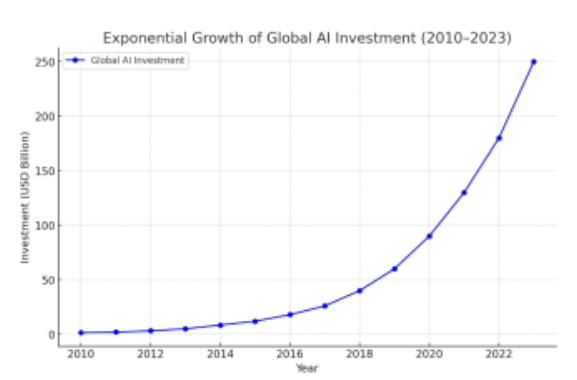
Agentive AI Model Training & Deep Learning
Training models in agentive AI involves a combination of supervised, unsupervised, and reinforcement learning methods:
Training Methods:q
- Supervised Learning: Uses labeled data to teach the AI system how to recognize patterns and make decisions.
- Unsupervised Learning: Identifies hidden patterns or groupings in data without prior labeling.
- Reinforcement Learning: Allows the system to learn from trial and error, where actions are rewarded or penalized based on outcomes.
- Deep Learning Techniques:
- Neural Networks: Multi-layered networks that simulate human brain activity, enabling the system to process complex and abstract patterns.
- Convolutional Neural Networks (CNNs) & Recurrent Neural Networks (RNNs): Often used for processing image and sequential data, respectively.
- Transfer Learning: Leveraging pre-trained models to accelerate learning on new but related tasks.

These techniques empower the system to evolve, continuously improving its ability to understand and act upon the environment.
Data Processing & Algorithms
Data is at the heart of agentive AI, and efficient data processing is crucial for effective decision-making:
Data Management:
- Acquisition: Data is collected from diverse sources such as sensors, databases, and user interactions.
- Preprocessing: Data is cleaned, normalized, and transformed to ensure consistency and usability.
- Storage: Efficient data storage systems are used to handle large volumes of data, enabling quick retrieval and processing.
Role of Algorithms:
- Analysis: Algorithms process and analyze data to extract relevant features and identify trends.
- Decision Support: Algorithms evaluate possible actions based on historical data and real-time inputs, ensuring informed decision-making.
- Optimization: Continuous improvement techniques are applied to refine algorithms and enhance performance over time.
This structured approach to data management and algorithm application is critical for the system to interpret information accurately and respond appropriately.
Agentive AI Decision-Making Process & Self-Learning Models
The decision-making process in agentive AI is dynamic and continuously refined through self-learning:
Decision-Making Process:
- Evaluation: The AI assesses the current state, weighing possible actions based on historical data, predictive models, and real-time feedback.
- Selection: The optimal action is chosen from a range of possibilities, balancing risk, reward, and long-term outcomes.
- Execution: The chosen action is implemented, affecting the system or environment.
Self-Learning Models:
- Continuous Improvement: The system uses feedback from past actions to adjust its decision-making strategies.
- Adaptive Algorithms: Machine learning models evolve over time, ensuring that the AI remains effective even as the environment or data patterns change.
- Performance Metrics: The system constantly monitors its performance, using metrics to evaluate success and identify areas for improvement.
Together, these elements allow agentive AI to not only make decisions but also learn from each interaction, progressively enhancing its ability to function autonomously and effectively in diverse scenarios.
V. Agentive AI in Society & Today ™s World
A. Current Role of Agentive AI
Agentive AI is increasingly making its mark across a variety of sectors by enabling systems to function with a degree of autonomy and adaptability that was previously unattainable. For instance:
- Healthcare: AI agents are used to monitor patient health in real time, assist in diagnostics, and even manage personalized treatment plans.
- Finance: In banking and investment, agentive AI helps in fraud detection, risk management, and executing high frequency trades.
- Customer Service: Intelligent virtual assistants and chatbots provide dynamic customer support by understanding context and learning from each interaction.
- Manufacturing: AI-driven automation systems adjust production processes on the fly, optimizing efficiency and reducing downtime.
- Smart Cities: From traffic management to energy distribution, agentive AI is at the heart of systems designed to improve urban living conditions.
These real-world applications demonstrate how agentive AI is transforming operational capabilities and service delivery across industries.

Agentive AI in Digital Transformation
Digital transformation is largely driven by the ability to harness data and automate complex processes. Agentive AI contributes to this transformation by:
- Modernizing Processes: It replaces rigid, rule-based systems with adaptive models that learn and optimize operations continuously.
- Enhancing Integration: Agentive AI seamlessly integrates with existing digital infrastructures such as CRM systems, ERP platforms, and IoT devices, thereby streamlining workflows.
- Driving Innovation: By enabling real-time decision making and predictive analytics, it supports the creation of new business models and services that can respond quickly to market changes. The result is a more agile, responsive, and efficient digital ecosystem that can better serve both businesses and consumers.
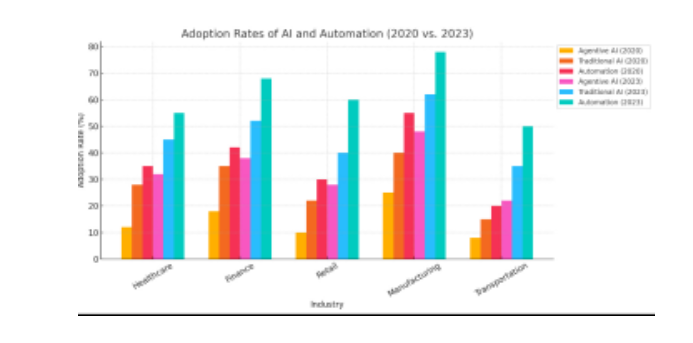
Impact on Jobs & Society
The rise of agentive AI brings significant changes to the workforce and society at large:
- Job Evolution: While there is concern about automation replacing traditional roles, agentive AI also creates opportunities for new jobs in AI oversight, maintenance, and ethical governance.
- Reskilling and Upskilling: As tasks become more automated, the demand for advanced skills in managing and interpreting AI systems increases, prompting a shift in education and training paradigms.
- Societal Changes: Agentive AI influences daily life by improving services, enhancing decision-making in public sectors, and even reshaping how we interact with technology in our homes and cities. The societal impact is multifaceted, with both opportunities and challenges as communities adapt to the integration of more autonomous systems.
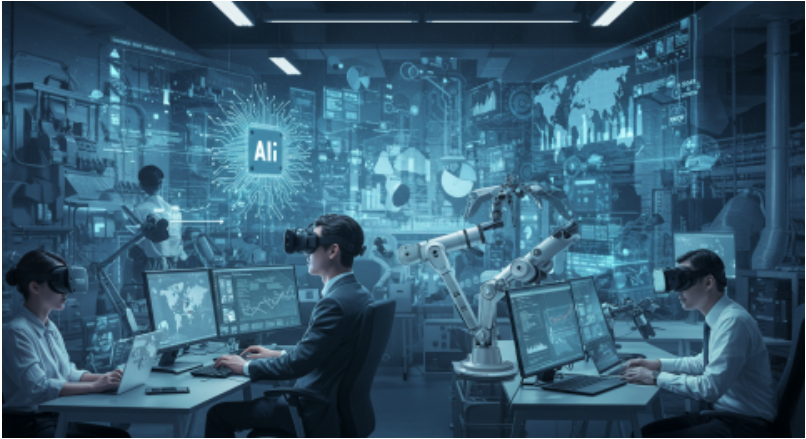
Adoption Trends and Future Outlook
Adoption of agentive AI is on a steady rise, underpinned by several key trends:
- Increased Investment: Both private and public sectors are investing heavily in AI research and development, with a particular focus on systems that can operate autonomously.
- Wider Application Scope: Beyond traditional industries, agentive AI is finding new applications in areas such as personalized education, autonomous transportation, and smart infrastructure.
- Regulatory and Ethical Developments: As adoption grows, there is a parallel push towards developing frameworks and policies that ensure these systems are implemented responsibly and ethically.
- Anticipated Growth: Market forecasts suggest significant growth in the agentive AI sector, with emerging technologies like edge computing and 5G networks further accelerating its capabilities and deployment. Overall, the future of agentive AI looks promising as it continues to integrate deeper into both our professional environments and daily lives, paving the way for smarter, more efficient, and adaptive systems.

VI.Ethical and Practical Aspects of Agentive
Agentive AI introduces several ethical challenges that must be addressed to ensure its responsible use:
Transparency:
It is crucial that the decision-making processes of agentive AI systems are understandable to users and stakeholders. Transparent systems enable oversight and foster trust by clarifying how data inputs are transformed into actionable outcomes.
Accountability:
With AI systems operating autonomously, determining responsibility for decisions or actions can be complex. Establishing clear lines of accountability is essential to ensure that any negative outcomes can be addressed and rectified by the appropriate parties.
Bias:
Like other forms of AI, agentive AI is vulnerable to biases embedded in the training data or algorithms. These biases can lead to unfair or discriminatory outcomes. Proactively identifying, mitigating, and monitoring bias is critical to maintain ethical standards and ensure equitable treatment across all user groups.
Limitations of Agentive AI
Despite its advanced capabilities, agentive AI faces several technological and practical constraints:
Technological Constraints:
- Data Dependence: The performance of agentive AI heavily relies on the quality and volume of data available. Inadequate or biased data can limit the system’s effectiveness.
- Computational Demands: Running complex models in real time requires significant processing power and resources, which can be a barrier for some applications.
Generalization: Although agentive AI is designed to learn and adapt, there are scenarios where the system may struggle to generalize its learning to novel or rapidly changing environments.
Practical Constraints:
- Integration Challenges: Merging agentive AI with existing legacy systems or infrastructures can be difficult, potentially slowing down implementation.
- Scalability: While agentive AI shows promise in controlled environments, scaling these systems to larger, more complex operational settings may expose further limitations in performance and reliability.
Adoption Barriers
Implementing agentive AI on a wide scale comes with its own set of challenges:
Complex Implementation:
Deploying agentive AI often requires significant overhauls in business processes, IT infrastructure, and workforce training. This complexity can deter organizations from adopting these systems, especially when the technology is still evolving.
Integration with Legacy Systems:
Many organizations operate with existing systems that were not designed to work with modern AI technologies. Integrating agentive AI into these environments requires careful planning and often, substantial investment.
Cultural and Organizational Resistance:
The shift toward autonomous decision-making may face resistance from employees and management who are accustomed to traditional operational models. Overcoming this resistance necessitates clear communication about the benefits, coupled with adequate training and change management strategies.
Cost and ROI Uncertainty:
The initial investment in agentive AI, including costs related to technology, training, and integration, can be significant. Furthermore, uncertainty about the tangible return on investment (ROI) can slow down decision-making regarding its adoption. Addressing these ethical and practical aspects is essential not only for the successful deployment of agentive AI but also for ensuring that its integration into society brings about positive, sustainable change.
Ethical and Practical Aspects of Agentive AI A. Ethical Considerations
Agentive AI introduces several ethical challenges that must be addressed to ensure its responsible use:
Transparency:
It is crucial that the decision-making processes of agentive AI systems are understandable to users and stakeholders. Transparent systems enable oversight and foster trust by clarifying how data inputs are transformed into actionable outcomes.
Accountability:
With AI systems operating autonomously, determining responsibility for decisions or actions can be complex. Establishing clear lines of accountability is essential to ensure that any negative outcomes can be addressed and rectified by the appropriate parties.
Bias:
Like other forms of AI, agentive AI is vulnerable to biases embedded in the training data or algorithms. These biases can lead to unfair or discriminatory outcomes. Proactively identifying, mitigating, and monitoring bias is critical to maintain ethical standards and ensure equitable treatment across all user groups.
- Limitations of Agentive AI
Despite its advanced capabilities, agentive AI faces several technological and practical constraints:
Technological Constraints:
- Data Dependence: The performance of agentive AI heavily relies on the quality and volume of data available. Inadequate or biased data can limit the system’s effectiveness.
- Computational Demands: Running complex models in real time requires significant processing power and resources, which can be a barrier for some applications.
- Generalization: Although agentive AI is designed to learn and adapt, there are scenarios where the system may struggle to generalize its learning to novel or rapidly changing environments.
Practical Constraints:
- Integration Challenges: Merging agentive AI with existing legacy systems or infrastructures can be difficult, potentially slowing down implementation.
- Scalability: While agentive AI shows promise in controlled environments, scaling these systems to larger, more complex operational settings may expose further limitations in performance and reliability.
Adoption Barriers
Implementing agentive AI on a wide scale comes with its own set of challenges:
Complex Implementation:
Deploying agentive AI often requires significant overhauls in business processes, IT infrastructure, and workforce training. This complexity can deter organizations from adopting these systems, especially when the technology is still evolving.
Integration with Legacy Systems:
Many organizations operate with existing systems that were not designed to work with modern AI technologies. Integrating agentive AI into these environments requires careful planning and often, substantial investment.
Cultural and Organizational Resistance:
The shift toward autonomous decision-making may face resistance from employees and management who are accustomed to traditional operational models. Overcoming this resistance necessitates clear communication about the benefits, coupled with adequate training and change management strategies.
Cost and ROI Uncertainty:
The initial investment in agentive AI, including costs related to technology, training, and integration, can be significant. Furthermore, uncertainty about the tangible return on investment (ROI) can slow down decision-making regarding its adoption. Addressing these ethical and practical aspects is essential not only for the successful deployment of agentive AI but also for ensuring that its integration into society brings about positive, sustainable change.
VII. Business Applications of AI Agents
Overview of AI Agents in Business
AI agents are increasingly becoming a cornerstone of modern business operations, offering versatile solutions that can be tailored to various industry needs. These systems provide a wide range of benefits, including:
Automation of Routine Tasks: Reducing manual effort and freeing up human resources for higher-level strategic work.
Enhanced Decision-Making: Leveraging real-time data analysis to support timely, informed decisions.
Scalability: Allowing businesses to efficiently manage growing operations without a proportional increase in costs.
Personalization: Delivering customized experiences to customers by analyzing behavior and preferences.
Cost Reduction: Streamlining operations to lower overheads and improve profitability. By integrating AI agents into their workflows, businesses can gain a competitive edge through improved operational efficiency and responsiveness.
Specific Use Cases
AI agents are finding applications across a diverse set of industries. Some notable examples include:
Digital Marketing:
AI agents analyze customer data to create personalized marketing campaigns, optimize ad placements, and automate content generation, leading to more effective customer engagement and improved conversion rates.
Customer Support:
Through intelligent chatbots and virtual assistants, AI agents handle routine customer inquiries, resolve common issues, and escalate complex cases to human operators, resulting in faster response times and higher customer satisfaction.
Sales Automation:
AI-powered systems can identify potential leads, forecast sales trends, and automate follow-up communications, streamlining the sales process and driving revenue growth.
Finance and Banking:
In the financial sector, AI agents are used for fraud detection, risk assessment, automated trading, and personalized financial advice, enhancing security and customer service while optimizing financial operations.
Healthcare:
From diagnostic support to patient monitoring and administrative task automation, AI agents assist healthcare providers in delivering timely, precise care while reducing the administrative burden.
Real Estate:
AI-driven tools help in property valuation, market trend analysis, and personalized property recommendations, improving the efficiency of real estate transactions and customer interactions.
Benefits for Businesses
Integrating AI agents into business processes offers several tangible benefits:
Increased Efficiency:
By automating repetitive tasks and streamlining processes, AI agents help businesses operate more efficiently, reducing errors and saving valuable time.
Better Decision-Making:
AI agents provide data-driven insights and predictive analytics that support more informed strategic decisions, allowing companies to respond swiftly to market changes.
Improved ROI:
The combination of enhanced productivity, cost savings, and optimized operations leads to a higher return on investment. Businesses can allocate resources more effectively and achieve greater scalability with AI-driven solutions.By embracing AI agents, companies not only modernize their operations but also set the stage for long-term growth and innovation in a competitive marketplace.
VIII. Implementation of AI Agents in Business
A. How to Implement Agentive AI
Implementing agentive AI within a business requires a clear, step-by-step approach to ensure smooth integration and maximum impact. Consider the following process:
Assess Business Needs:
Identify key processes or challenges where AI can add value.
Define clear objectives and success criteria.
2. Select Use Cases:
Prioritize areas for AI deployment based on potential ROI and impact.
Choose specific functions (e.g., customer support, sales automation) that can benefit from autonomous decision making.
Develop a Pilot Project:
Start with a small-scale implementation to test the technology and gather insights.Use pilot results to refine processes and build a case for broader deployment.
4.Choose the Right Technology:
Evaluate platforms, frameworks, and tools that align with your business needs. Consider factors such as scalability, compatibility, and security.
Design and Develop the Solution:
Work with internal teams or external experts to develop a tailored AI solution. Ensure the system is designed for continuous learning and adaptation.
Test and Iterate:
Conduct rigorous testing in controlled environments. Incorporate feedback loops to improve the model before full-scale deployment.
Integration with Existing Systems
For agentive AI to be effective, it must work seamlessly with your current technological ecosystem:
CRM and Business Tools:
Integrate AI agents with CRM systems to enhance customer data analysis and personalize interactions.Ensure compatibility with existing databases, ERP systems, and other key business applications.
APIs and Middleware:
Use APIs to connect AI solutions with legacy systems. Leverage middleware solutions to facilitate data exchange and interoperability.
Data Synchronization:
Implement processes to ensure real-time data synchronization across platforms. Maintain data integrity and security during integration. C. Deployment and Automation
Once the AI solution is developed and integrated, focus on optimizing business processes:
Workflow Automation:
Deploy AI agents to automate repetitive tasks and streamline operations. Define clear workflows that leverage AI capabilities to handle complex decision-making.
Process Optimization:
Continuously monitor the performance of AI agents to identify bottlenecks. Use insights from data analytics to fine-tune processes and enhance efficiency.
Scalable Deployment:
Roll out the solution incrementally to ensure stability. Prepare to scale the system as business needs evolve and demand increases.
Considerations for Startups and Small Businesses
Tailoring the implementation of agentive AI for smaller enterprises involves addressing unique challenges:
- Cost Efficiency:
- Opt for scalable, cost-effective AI solutions that offer flexibility as your business grows.
- Consider cloud-based platforms to minimize upfront investments in hardware.
- Simplicity and Agility:
- Choose solutions that are easy to implement and manage without requiring extensive technical expertise.
- Focus on quick wins and incremental improvements to build momentum and demonstrate value.
- Customization:
- Ensure that the AI solution can be tailored to your specific business model and processes.
- Work with vendors or consultants who understand the unique needs of startups and small businesses.
- Measuring ROI and Success
Evaluating the impact of AI agents is critical to understanding their value and guiding future investments:
- Define Key Performance Indicators (KPIs):
- Establish measurable metrics related to efficiency, cost reduction, customer satisfaction, and revenue growth.
- Align KPIs with the initial objectives set during the planning phase.
- Monitor Performance:
- Use dashboards and analytics tools to track the performance of AI agents in real time.
- Compare performance data against baseline metrics to assess improvements.
- Gather Feedback:
- Collect insights from employees and customers to understand the qualitative impact of the AI system.
- Use feedback to identify areas for further enhancement. • Iterate and Optimize:
- Regularly review performance metrics and adjust strategies as needed.
- Leverage continuous improvement practices to ensure that the AI solution remains aligned with evolving business goals.
By following this structured approach, businesses of all sizes can successfully implement agentive AI to drive operational efficiencies, enhance decision-making, and ultimately achieve a stronger competitive edge.
AI Agent Development Tools & Platforms
A. Leading Agentive AI Platforms
When it comes to deploying agentive AI, several leading platforms have emerged as industry standards. These platforms offer robust tools, comprehensive documentation, and a supportive ecosystem to help developers build, train, and deploy intelligent agents:
- OpenAI:
Known for its groundbreaking research and products like ChatGPT, OpenAI provides APIs and models that enable advanced natural language processing and decision-making capabilities. Its platform is highly regarded for its state-of the-art performance and continuous updates.
IBM Watson:
IBM Watson offers a suite of AI services designed for business applications, including data analysis, natural language understanding, and machine learning. Watson’s modular architecture allows businesses to integrate AI into various workflows, from customer support to operational optimization.
Google Bard:
As part of Google’s expanding AI ecosystem, Google Bard leverages powerful language models to generate and understand human-like text. It is particularly well-suited for applications requiring natural language interactions and content generation.
Microsoft Copilot:
Integrated into Microsoft’s productivity tools, Copilot uses AI to assist with tasks ranging from document creation to data analysis. It emphasizes seamless integration with existing workflows, making it a practical choice for businesses looking to boost efficiency through AI.
Open-Source Frameworks & Tools
For those who prefer flexibility and customization, a wide range of open-source frameworks and tools are available to support the development of agentive AI:
Frameworks:
TensorFlow and PyTorch: Two of the most popular frameworks for deep learning, TensorFlow and PyTorch provide extensive libraries and community support for building neural networks and other machine learning models.
Keras: A high-level API that runs on top of TensorFlow, Keras simplifies the process of building and training models, making it accessible for developers at all skill levels.
OpenAI Gym: Specifically designed for reinforcement learning, OpenAI Gym offers a variety of environments to test and refine agent behaviors, fostering rapid experimentation.
- Programming Languages and Resources:
Python: Widely used due to its simplicity and the extensive range of libraries available for data analysis, machine learning, and AI development.
R: Known for its statistical and data visualization capabilities, R is another language that can support AI development, particularly in data-heavy environments.
Community and Documentation: Open-source tools benefit from strong community support, where developers share code, best practices, and troubleshooting tips, facilitating a collaborative development environment.
- Choosing the Right Tool for Your Needs
Selecting the appropriate development tool or platform is critical for a successful AI implementation. Consider the following factors:
- Use Case and Requirements:
Identify the specific tasks your agentive AI needs to perform. For example, if your focus is on natural language processing, platforms like OpenAI and Google Bard may be more suitable, whereas for reinforcement learning tasks, tools like OpenAI Gym might be preferable.
- Scalability and Integration:
Evaluate whether the platform can scale with your business and integrate seamlessly with your existing systems. Platforms like IBM Watson and Microsoft Copilot are designed to integrate into larger enterprise ecosystems.
- Cost and Support:
Consider the cost structure—whether you need a subscription-based service or a free, open-source solution—and the level of support available, including community resources, documentation, and customer service.
- Customization and Flexibility:
Open-source frameworks offer greater flexibility for custom development and research purposes, while commercial platforms often provide out-of-the-box solutions with less need for customization. By carefully assessing these factors, businesses and developers can choose the right combination of tools and platforms that align with their strategic goals and technical requirements, setting the stage for successful agentive AI deployment.
X. Agentive AI & Automation
Role of Agentive AI in Automation
Agentive AI significantly enhances automation by extending the capabilities of traditional Robotic Process Automation (RPA). While RPA focuses on automating repetitive, rule-based tasks, agentive AI introduces a level of intelligence that allows systems to learn from data, adapt to changing environments, and make decisions independently. This integration results in:
- Enhanced Flexibility: AI agents can handle exceptions and adapt to new scenarios beyond fixed rules.
- Dynamic Adaptation: They continuously learn from operational data, enabling real-time adjustments to processes.
- Intelligent Workflow Integration: By merging RPA with agentive AI, businesses can automate more complex processes that require understanding context and making nuanced decisions.
Process Optimization and Efficiency Improvement
AI agents play a pivotal role in driving business efficiency and process optimization. Their ability to analyze and interpret large volumes of data in real time leads to:
- Streamlined Operations: Automation of routine tasks reduces human error and frees up valuable resources for strategic initiatives.
- Identification of Bottlenecks: Continuous monitoring and data analysis help pinpoint inefficiencies within workflows, allowing for targeted improvements.
- Resource Optimization: By intelligently managing workflows, AI agents ensure that operations are both faster and more cost-effective, ultimately contributing to higher productivity and profitability.
Integrating Predictive Analytics and Decision-Making
A key advantage of agentive AI is its seamless integration of predictive analytics with proactive decision-making. This combination allows businesses to:
- Anticipate Future Trends: By analyzing historical data and current patterns, AI agents can forecast potential outcomes and risks.
- Make Proactive Adjustments: Predictions inform strategic decisions, enabling systems to preemptively adjust processes before issues arise.
- Drive Informed Actions: The fusion of data insights with real-time decision-making ensures that actions taken are both timely and well-informed, leading to more resilient and responsive operational strategies.
Overall, the synergy between agentive AI and automation creates a robust framework where intelligent decision making, process optimization, and predictive insights work together to enhance business performance and agility.
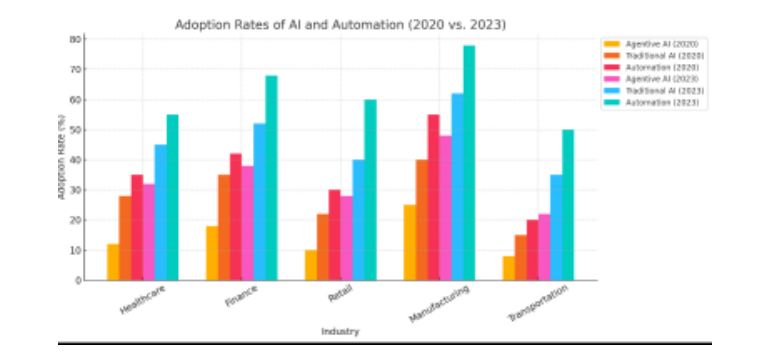
Personalization Using AI Agents
AI for Personalized Marketing
AI agents play a critical role in enhancing customer experiences by delivering highly personalized marketing strategies. They achieve this by:
Customer Behavior Analysis:
Utilizing data analytics and machine learning to understand individual customer preferences, purchase histories, and engagement patterns.
Tailored Content Delivery:
Dynamically adjusting marketing messages and offers based on real-time insights, ensuring that communications resonate with each unique customer.
Adaptive Campaign Management:
Continuously refining marketing strategies through feedback loops, allowing campaigns to evolve with changing customer behaviors and market trends.
Use in Chatbots & Virtual Assistants
The integration of AI agents into chatbots and virtual assistants transforms customer interaction by:
Enhanced Engagement:
Providing conversational experiences that are not only reactive but also proactive, anticipating customer needs and offering timely assistance.
Contextual Understanding:
Leveraging natural language processing and context-aware algorithms to understand user intent, resulting in more relevant and accurate responses.
Continuous Learning:
Improving over time through interactions, enabling chatbots and virtual assistants to handle increasingly complex queries and provide personalized support.
Targeted Advertising & Product Recommendations
AI agents excel in targeted advertising and product recommendations by combining customer insights with real time data:
Data-Driven Insights:
Analyzing customer demographics, online behavior, and purchase patterns to identify trends and preferences.
Customized Recommendations:
Delivering product suggestions and advertisements that align with individual interests, thereby increasing engagement and conversion rates.
Real-Time Adaptability:
Adjusting recommendations on the fly as new data is received, ensuring that the offers remain relevant and timely for each customer.
XII. Challenges & Risks of AI Agents
Implementation Risks and Security Concerns
While AI agents offer significant benefits, their deployment also introduces several risks:
Potential Vulnerabilities:
AI systems can be susceptible to cyber-attacks, data breaches, and exploitation of system weaknesses if not properly secured.
Mitigation Strategies:
Implementing robust security measures—such as encryption, regular audits, and continuous monitoring—helps protect sensitive data and ensure system integrity.
Ethical Concerns and Bias Issues
The use of AI agents raises important ethical considerations that need to be addressed:
Fairness and Accountability:
Biases in training data or algorithms can lead to unfair or discriminatory outcomes. It is essential to design systems that are transparent and accountable.
- Ensuring Ethical Use:
Establishing ethical guidelines, promoting diverse datasets, and regularly evaluating AI decisions are crucial steps in mitigating bias and ensuring fairness.
Data Privacy and Training Difficulties
Managing data effectively is a cornerstone of successful AI implementation, yet it poses its own challenges:
Data Management Challenges:
Ensuring data privacy while collecting, storing, and processing large volumes of information requires robust data governance policies.
Training Complexities:
Acquiring high-quality, unbiased training data can be difficult, and improper training can lead to suboptimal performance or unintended behaviors.
Balancing AI and Human Decision-Making
Achieving the right balance between AI-driven and human decision-making is critical for responsible usage:
Collaborative Approaches:
Combining AI insights with human expertise ensures that decisions are well-rounded and consider nuances that machines may overlook.
Maintaining Oversight:
Human oversight is necessary to monitor AI decisions, intervene when necessary, and continuously refine the AI’s performance to align with ethical and operational standards. Together, these challenges and risks highlight the importance of a cautious, well-regulated approach to deploying AI agents, ensuring that their benefits are maximized while minimizing potential drawbacks.
XIII. Future of Agentive AI
Emerging Trends and Next-Generation Models
The next generation of agentive AI models promises to redefine the capabilities of autonomous systems. Key emerging trends include:
Advanced Self-Learning:
Future models will feature more sophisticated learning mechanisms, enabling AI agents to adapt to complex scenarios and continuously improve their decision-making processes.
Increased Efficiency:
Technological advancements in hardware and algorithms will boost processing speeds and reduce energy consumption, making AI agents more scalable and efficient.
Interdisciplinary Innovations:
Integration of insights from neuroscience, robotics, and cognitive science could lead to hybrid models that more closely mimic human cognition and decision-making.
Market Growth and Integration with Emerging Technologies
Agentive AI is not evolving in isolation—its growth is interwoven with other cutting-edge technologies:
- Blockchain:
Integrating blockchain can enhance data security and transparency, allowing AI agents to operate in more decentralized and trusted environments.
The Metaverse:
As virtual environments expand, AI agents will be crucial in creating immersive, interactive experiences and managing complex digital ecosystems.
Self-Driving Cars and Smart Mobility:
In the realm of autonomous vehicles, agentive AI will further refine navigation and real-time decision-making, enhancing safety and efficiency.
Broader Industry Applications:
The fusion of agentive AI with IoT, augmented reality, and other emerging technologies will drive innovation across sectors like healthcare, finance, and smart cities.
The Role of Agentive AI in the Future of Work
Agentive AI is set to transform the workplace and redefine traditional job roles:
Enhanced Collaboration:
AI agents will increasingly support human workers by handling routine tasks, thereby enabling employees to focus on creativity and strategic decision-making.
- Job Evolution:
While automation may replace some routine roles, it will also spawn new opportunities in AI oversight, system maintenance, and ethical governance.
Operational Efficiency:
By optimizing workflows and automating repetitive processes, agentive AI will contribute to a more agile, productive, and responsive work environment.
Innovative Use Cases on the Horizon
Looking ahead, several innovative applications of agentive AI are emerging:
Smart Healthcare:
AI agents may provide personalized patient care, monitor health conditions in real time, and assist in complex diagnostic and surgical procedures.
Adaptive Learning:
In education, AI agents could offer customized learning experiences that dynamically adjust to the needs and progress of individual students.
Next-Gen Customer Experiences:
Retail and service industries could leverage AI to anticipate customer needs, deliver tailored recommendations, and create interactive, engaging shopping experiences.
Environmental Management:
Agentive AI might play a pivotal role in sustainability initiatives, such as monitoring environmental changes and optimizing resource allocation in smart cities.
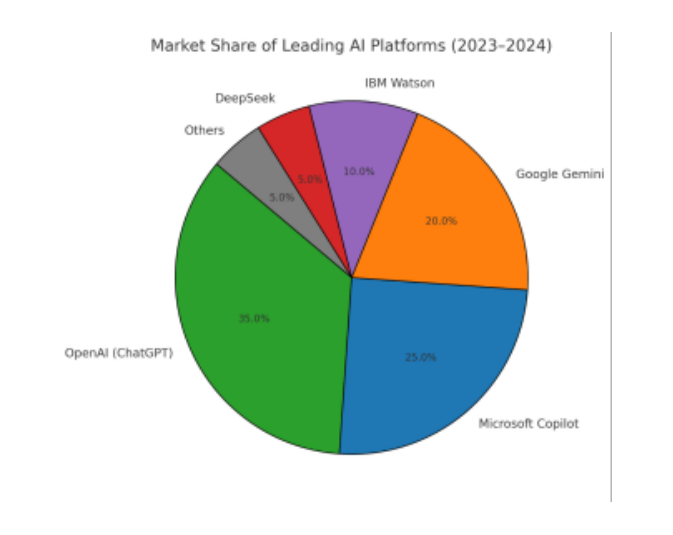
XIV. Conclusion
Agentive AI is rapidly evolving, offering unprecedented opportunities to revolutionize how we work, live, and interact with technology. In this post, we examined the core concepts behind agentive AI, its unique capabilities compared to other AI forms, and the mechanisms that enable its autonomous functioning. We also explored its transformative impact on society and business, delving into its applications, benefits, and the ethical and practical challenges it poses. Looking forward, the future of agentive AI is bright and filled with potential. Emerging trends, such as advanced self learning models and integration with technologies like blockchain and the Metaverse, promise to push the boundaries of what AI can achieve. As agentive AI reshapes the future of work and drives innovation across industries, its role in fostering efficiency, creativity, and new business models will only become more significant. We encourage you to explore these developments further and consider how agentive AI might be integrated into your own endeavors. The journey toward a more intelligent, adaptive, and interconnected world is well underway—now is the time to engage with and shape the future of AI.
